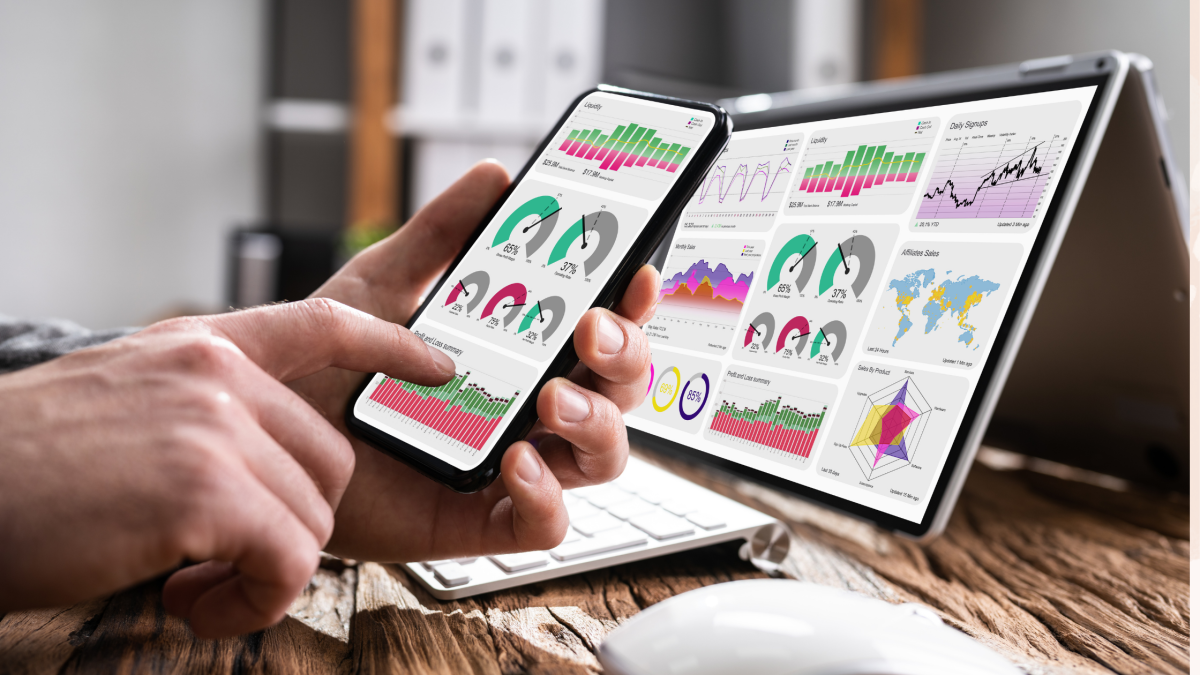If you are following along with our social media marketing strategies series, you know why setting SMART goals is an important first step to success. Now, you need a way to ensure that your goals are working for you in numbers. That means it is time to determine which metrics you will use to gauge your progress.
Many times, companies will be so excited to begin implementing their new social media strategy that they will forget how important it is to establish a way to measure progress. Sure, that picture of your new storefront got a ton of likes and the text of the post was all at once witty and informational, but how do you know if your target audience was the ones engaged?
Every brand or business needs to measure their growth and success differently. It will depend on your goals and what you are trying to achieve, another reason that goal setting needs to be the number one task above everything else. Trying to determine your growth without knowing what you are aiming for is like buying a round trip ticket using all of your life savings to a destination you don’t even know. Where will you end up? Will it be a tropical beach (Yes, please!) or a hippo-infested delta (I’ll pass)?
A word about vanity metrics
Vanity metrics, like how many followers you have, aren’t necessarily where you want to place your focus when measuring your success. It can be tempting to see the numbers of followers and likes rise and fall and think that a gain will equate to more business on your end. Not only that, it is easy to judge other brands by the number of the followers they have on their social media account. Followers and likes are becoming a less measurable way to determine success because companies can buy followers, which dilutes the number’s importance. In the long run, followers aren’t everything, and you will need to work harder than gaining more eyeballs if you want to see results.
So, what metrics should we target?
Every social media platform has its own native analytics for you to utilize in measuring the success of marketing your brand, including campaigns and other strategies. You will need to establish/move to a business account before you are able to use associated metrics. From there, the sky is the limit, again depending on your goals and what you are trying to achieve.
- Engagement — This category includes likes, comments, shares and clicks. You can track engagement to find out how involved your target audience is in the conversations you are starting on social media. You can answer questions relating to how much your consumers are interacting with your social account and how often. This one metric is used often, but it may not give you the whole story, which is why you should combine it with looking to other metrics for signs you are reaching your goals.
- Awareness — This metric involves both your impressions, or how many times a post shows up in someone’s timeline, and reach, the potential unique viewers a post could have. Both impressions and reach can tell you a lot about how visible you are on the social media platform.
- Share of Voice — Volume and sentiment are included under this category, which indicates how much of the online sphere your brand is taking part in. If you are a pizza place, for example, how many consumers are looking at your restaurant as compared to others? This metric will help you to understand how you are reaching your goals of capturing more market attention.
- ROI — Return on investment, like in other areas of business, questions what you are getting in return for the effort and money you are putting toward your social media. This is an incredibly important metric and includes both referrals and conversions. A referral is how a user lands on your website. Was it through your #linkinbio on Instagram, for example? Or did they find you via your Facebook events page? Conversions are a fancy word for a consumer purchasing something through your website. This is the whole point of many social media strategies, to increase purchases by the target market, so these metrics should be consistently checked to ensure your continued success on any social media platform.
- Click Through Rate (CTR) — Along with referrals and conversions comes CTR, a handy way to measure how many times someone clicks on your link versus how many conversions you receive. A high CTR would mean you have run a very effective ad.
- Customer Care — Response rate and time are important in your brand’s overall interaction with the target market. Consumers these days are looking for great customer experience and that doesn’t end when they leave your brick-and-mortar store or your web page. Use metrics like response rate and time to check how quickly your team is replying to the consumer.
We believe it is vital that we help our clients to see the progress they are gaining thanks to the implementation of their marketing strategy. Metrics, then, are our good friends. (Hey, look at our tagline! “Strategic Approach. Measurable Results.”) Identifying the correct metrics for your brand, based on the SMART goals you have established, will help you to easily see your progress and understand how your business is growing in relation to competitors in the social media stratosphere. When it comes down to it, a smart social media strategy is your way to win 2022.





